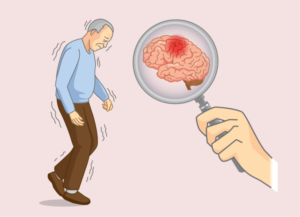One therapy that still stands out despite the rapidly developing field of medicine is pet therapy, sometimes known as animal-assisted therapy. Many civilizations have known for millennia that there is healing power in animals, acknowledging the deep connection between humans and animals.
Table of Contents
Introduction
Animals have always played an important role in human culture, from ancient Egyptian images of cats symbolizing protection and healing to indigenous communities using animals as spiritual guides. Pet therapy has emerged in recent decades as a realistic and complementary treatment option for a variety of health disorders because of the systematic harnessing of the therapeutic potential of animals.
Understanding The Workings of Pet Therapy for Mental Health

People with physical, emotional, or mental health issues can benefit from participating in pet therapy by interacting on purpose with trained animals. These animals act as catalysts for positive change. These animals are usually dogs or cats due to their innate fondness for human connection. Certified therapy animals and their trained handlers visit hospitals, nursing homes, classrooms, and even patients’ homes to foster better psychological and physiological wellness. Petting a dog, watching a cat play, or spending time with another animal can have profound effects on human health.
Benefits Of Pet Therapy on A Wide Range of Medical Issues
Mental Health Benefits

The importance of caring for one’s mental health has grown in a world of hectic schedules, heavy workloads, and continual communication. Mental health issues, such as anxiety, depression, and post-traumatic stress disorder (PTSD), can have a significant effect on a person’s health and happiness. Pet therapy is one of many therapeutic techniques that has shown promise and offers comprehensive approaches to these issues. This article goes into the amazing human-animal bond and how pet therapy benefits people suffering from anxiety, sadness, and post-traumatic stress disorder (PTSD).
The Role of the “Love Hormone” in Anxiety and Stress

There is a growing need for effective interventions that might bring comfort and solace due to the widespread prevalence of stress and anxiety in contemporary society. Pet therapy is a novel and captivating approach with the potential to alleviate stress and anxiety by stimulating the release of oxytocin, also known as the “love hormone.” This neurohormone is released in response to positive social interactions and plays a pivotal role in encouraging feelings of closeness, trust, and group identification.
The hormone oxytocin is released in response to the presence of therapy animals. The brain releases oxytocin in response to social interaction with these furry companions, including gentle touching or watching their amusing activities, which has the ripple effect of making people feel peaceful and relaxed. Increasing oxytocin levels have been shown to reduce stress-related physiological reactions such as a faster heart rate and higher blood pressure.
There is a real and biological mechanism at work during pet therapy that allows people to feel less anxious and stressed. Anxiety sufferers can find relief from their racing minds and overwhelming concerns when they interact with animals in a therapeutic setting. The stress of daily life can be temporarily alleviated through focused interaction with a kind and non-judgmental creature. Petting a dog or listening to a cat purr can help create a tranquil atmosphere where their owners can feel at ease despite their internal turmoil.
Positive Neurotransmitter Release as a Treatment for Depression

Managing depression, a complicated mental health disease marked by persistent feelings of sadness, hopelessness, and isolation, requires a diversified strategy. Companionship with therapy animals provides a unique way to alleviate the emotional weight of depression, in addition to counseling, medicine, and changes in lifestyle.
Two crucial neurotransmitters, serotonin and dopamine, are released in response to positive interactions with animals. These neurotransmitters are essential for healthy emotional regulation and well-being. Serotonin is the “feel-good neurotransmitter,” since it promotes feelings of satisfaction and happiness. On the other hand, dopamine has been connected to feelings of drive, pleasure, and reward. Deficiencies in these neurotransmitters are common in depressed people and contribute to their emotional difficulties.
Serotonin and dopamine levels rise when people interact with therapy animals. Positive emotional states are induced as a result of increased production of certain neurotransmitters in response to interaction with these animals. Therapy animals provide an atmosphere of true emotional connection and support through their unconditional love and friendship. Depression is characterized by feelings of isolation and loneliness, but this connection can help alleviate such symptoms.
Pet therapy benefits by creating joyful, delightful moments that bring about genuine laughter and smiles. These instances are like rays of sunshine shining through the clouds, giving people renewed optimism and hope. Natural pain relievers and mood boosters called endorphins are produced by the brain in response to the repetitive, rhythmic interaction with therapy animals. The emotional and neurochemical components of depression are both targeted by pet therapy.
Positive Pathways to Healing from Post-Traumatic Stress Disorder

After being exposed to or experiencing a traumatic experience, it is possible to acquire Post-Traumatic Stress Disorder (PTSD). Nightmares, flashbacks, hypervigilance, and emotional numbing are just a few of the symptoms of post-traumatic stress disorder (PTSD) that can have a substantial influence on a person’s everyday life and mental well-being. Although cognitive-behavioral therapy and medicine have been shown to be helpful, the introduction of pet therapy provides a vital and unique alternative.
To help those suffering from post-traumatic stress disorder (PTSD), pet therapy benefits them by providing a comfortable and accepting environment in which they can express their feelings freely. Animals provide a true and genuine presence due to their intrinsic capacity to feel emotions and respond without judgment. This could provide a safe space where people feel comfortable expressing their innermost feelings without fear of judgment.
PTSD sufferers often feel hyperarousal, but the calming presence of therapy animals can help reduce this condition. Petting an animal can calm and soothe you, providing relief from the anxious condition that comes with hypervigilance. Petting is a great way to calm down and recover perspective because of the calming effect of the tactile stimulation it provides.
Additionally, the predictable and ritualistic nature of encounters with therapy animals can provide a calming routine for those with PTSD. The reliability of these exchanges provides comfort and security in a world full of surprises and unexpected events. In this way, pet therapy benefits those on the road to recovery by providing unqualified love and understanding while those with PTSD negotiate the challenges of everyday life.
Physical Health Benefits

The benefits of pet therapy are not just limited to mental health. It’s easy to forget the significant effect that merely engaging with animals can have in a world where so much attention is paid to scientific and medical breakthroughs. Animals have been trusted companions and healers for people for ages, and this healing bond has stood the test of time. The development of pet therapy has brought to light the tremendous health advantages of this age-old bond. Through the extraordinary connection between humans and animals, this study also explores how pet therapy benefits physical well-being, including its function in improving cardiovascular health, managing chronic pain, and supporting rehabilitation efforts.
Heart Health

Because it circulates blood, which is essential to life, the heart has many connections to our well-being. Hypertension, heart disease, and other cardiovascular-related conditions are major global killers. Unconventional therapies, such as pet therapy, have been shown to improve cardiovascular health, and this is becoming more and more widely acknowledged as medical knowledge expands.
Curiously, research has found a link between pet therapy and better heart health. Blood pressure and pulse rate have been demonstrated to decrease when people interact with therapy animals, specifically when they pet the animals in a rhythmic and soothing manner. The physiological effects of stress and anxiety are mitigated thanks to the production of oxytocin and other relaxation-inducing neurotransmitters in response to these stimuli.
The “bonding hormone,” oxytocin, helps people feel emotionally connected and secure, which in turn reduces stress on the heart. Petting has a calming effect on people because of the pattern it produces, which allows them to relax and let go of stress. By stimulating vasodilation at regular intervals, this symbiotic connection improves blood flow and oxygen delivery to tissues throughout the body. As a result, the reduced risk of hypertension and associated consequences is a result of this improved circulation.
Chronic Pain Management

Complex and burdensome, chronic pain affects millions of people worldwide and is characterized by ongoing pain that can have a profound effect on everyday life and quality of life. While medication and physical therapy are common methods for alleviating chronic pain, pet therapy benefits chronic pain uniquely.
Interacting with therapy animals is a great way to take your mind off of the discomfort you’re feeling. Interacting with animals is an engaging experience that captures attention and diverts concentration, temporarily taking the mind off of whatever is causing the person discomfort. This distracting effect has the potential to lessen the sensation of pain, providing some relief and encouraging a more upbeat frame of mind for the time being.
Additionally, endorphins, the body’s natural pain-relieving chemicals, are released as a result of the physical contact between humans and animals during therapy sessions. Natural analgesics like endorphins provide welcome relief from pain without the risks of pharmaceutical alternatives. The endorphins released during these exchanges are amplified by the therapeutic link built between the two, leading to a profound feeling of well-being that lasts long after the pet therapy session has ended.
Note: There might be affiliate links mentioned here. We may receive a commission if you purchase a product through an affiliate link. There is no additional charge for you. Please do your own research before making any online purchases.
Rehabilitation
Resilience and drive are common themes throughout the rehabilitation process, which is essential for those dealing with physical injuries or impairments. While conventional physical therapy is essential, incorporating pet therapy into recovery plans can provide a welcome change of pace and boost morale.
The presence of therapy animals can turn what could otherwise be an intimidating or tedious encounter into something that patients look forward to. Animals have a positive effect on people in rehabilitation because of their natural curiosity and sense of play. Having the opportunity to spend time with these adorable friends is a powerful motivator, propelling people forward on their road to recovery.

Therapy animals and their human handlers form a special bond during pet therapy that fosters a spirit of community and mutual aid. Having a supportive, understanding, and judgment-free friend by your side can help you feel more capable of overcoming physical obstacles. This kind of psychological support can help people feel better overall, which can have a beneficial effect on their recovery.
Pet therapy benefits include mobility, coordination, and balance. Rehabilitation exercises aim to target the same range of motions that are used in daily life, including walking, grooming, and playing with animals. Reactivating latent muscle groups and regaining motor abilities are aided by these kinds of natural and instinctive movements, as well as the sensory stimulation of tactile encounters.
Cognitive and Developmental Disorders
Animals’ ability to serve as growth and healing catalysts is an undeniably important thread in the complex tapestry of human intellect and development. Animals have emerged as transforming partners in the journey of individuals coping with cognitive and developmental problems, from the earnest gaze of a therapy dog to the gentle nuzzle of a therapy cat. This article delves into the complex ways in which human-animal bonds promote development, communication, and emotional well-being in people with conditions like autism spectrum disorder (ASD), dementia, Alzheimer’s disease, learning disabilities, and attention deficit hyperactivity disorder (ADHD).
Autism Spectrum Disorder (ASD)

A complicated neurological disease, autism spectrum disorder (ASD) causes a wide range of difficulties in social interaction, communication, and behavior. Despite these difficulties, interacting with animals, due to their predictable and non-threatening character, provides a novel opportunity for positive engagement and development. Animals are a common source of peace and comfort for children on the autism spectrum.
Pet therapy can be a game-changer in the lives of people with autism spectrum disorder. When you spend time with these mild-mannered beings, you develop a bond with them that goes beyond words. Therapy animals offer a fun and safe environment in which to practice and develop motor and sensory abilities via activities such as petting, grooming, and playing. Children with autism spectrum disorder (ASD) may find greater success in communicating and forming meaningful relationships as one of the greatest benefits of pet therapy.
Furthermore, having pet therapy benefits both parties by promoting two-way communication. Children on the autism spectrum typically experience a natural ebb and flow of communication while interacting with animals, where they pick up on the animal’s cues and signals and return the favor. The abilities learned with animals can be applied to human relationships by following this pattern of engagement as a guide. Children with autism spectrum disorder (ASD) benefit from pet therapy because the animals’ unconditional acceptance gives them a sense of security and confidence.
Benefits in Alzheimer’s Disease and Other Forms of Memory Loss

Memory loss and mental decline are constant companions for those living with dementia or Alzheimer’s. Pet therapy shines as a beacon of stability and comforting familiarity in this time of upheaval. Pet therapy benefits by providing a sense of comfort and familiarity, stimulating the senses, and fostering an emotional connection.
Reducing agitated behaviors and improving cognitive function are just two of the many positive benefits of pet therapy observed with people who are living with dementia. Feelings of restlessness and anxiety can be reduced because of the relaxing and rhythmic effects of pet therapy. Petting, grooming, and cuddling all stimulate the sensation of touch, which in turn brings back memories and helps people feel connected to their past.
The bond that forms between people with dementia and therapy animals goes far beyond words and into the realm of shared feelings and experiences. The steady, nonjudgmental presence of animals can be deeply comforting in a society where uncertainty and disorientation are commonplace. These emotional bonds between people and animals last long after the mind’s capacity has diminished.
Developmental Disabilities in Children
Learning Disabilities:
Academic situations that are too demanding for children with learning difficulties can increase their levels of stress and anxiety. It is in this setting that therapy animals might be seen as allies in the fight for student autonomy in the classroom. Pet therapy benefits by providing a relaxing and regenerating effect, creating an atmosphere that is more open to learning and development.
Emotional support from therapy animals can help those with learning challenges cope with the stress and worry that comes with school. The release of endorphins is triggered by interacting with animals, leading to feelings of happiness and calm. When one is in this mood, they are more mentally alert and open to new information.
Animal-assisted reading programs have received a lot of attention for their success in helping children with learning difficulties improve their reading abilities and self-esteem. Therapy animals provide children with an accepting and understanding audience as they read aloud to them, relieving them of any performance anxiety. This supportive setting fosters confidence and inspires enthusiastic reading. Reading to animals is a great way to practice reading aloud and enhance language abilities over time.
ADHD: A Fun Approach to Attention Deficit Hyperactivity Disorder
People with Attention Deficit Hyperactivity Disorder (ADHD) have trouble focusing and sitting still, which makes them a special difficulty in the workplace and the classroom. Pet therapy can be an interesting new distraction that can help people concentrate better.
Animal encounters are multi-sensory events that hold participants’ interest and keep them involved. Petting, playing with, and observing animals all provide sensory feedback that can be exciting for people with ADHD, who tend to seek out such experiences. An individual’s attention may be redirected from irrelevant stimuli to the task at hand as a result of such an immersive experience.
Having a therapy animal around can spice up otherwise mundane activities. Animals’ unpredictable behavior and the safe and supportive space they provide foster exploration and discovery. This increased involvement is a potent antidote to restlessness and impulsivity, allowing people with ADHD to focus their energy on productive pursuits.
Implementation and Challenges of Pet Therapy
Pet therapy is a shining example of the positive, transformative power of the intersection of innovation and compassion in healthcare. Animals have been shown to have a significant effect on human happiness that cuts across cultural lines and into the core of our common humanity. Despite the undeniable benefits of pet therapy, there are many factors to consider and hurdles to overcome before this therapeutic technique can be used successfully. This article delves into the nitty-gritty of adopting pet therapy, covering topics like animal selection and training, hygiene and allergies, ethical animal treatment, and striking a balance between different people’s preferences.
Building Trust Through Animal Selection and Training

Therapy animals are essential to the success of pet therapy, and as such, they must be carefully selected and trained. Animals used in pet therapy must have a certain combination of traits that makes them suitable for working with patients in a variety of medical settings. While dogs and cats are the most popular pets for therapeutic programs, other animals such as rabbits, guinea pigs, and even miniature horses have found their way into these settings as well.
Animals used in pet therapy receive extensive training that goes much beyond simple obedience. To guarantee they can maintain their composure under pressure, they are exposed to a wide variety of settings, sounds, and experiences. In addition, therapy animals are trained to understand and respond to both verbal and non-verbal cues, allowing them to communicate with people who may have trouble expressing themselves verbally. The basis for successful interactions between service animals and the people they will be helping is laid by the work of their handlers.
Hygiene and Allergies

Hygiene and illness prevention are of utmost significance in the field of healthcare. While there are undeniable advantages to using therapy animals, there is a need for stringent health and hygiene measures to prevent the spread of disease. Therapy animals are kept in peak health by their handlers, who see them for routine veterinary care, including vaccinations and checkups.
People who take part in pet therapy often have a wide range of health concerns, including allergies. Because of the possibility of allergens in therapy animals’ fur, dander, or saliva, people with allergies may have difficulty completely connecting with these animals. Many pet therapy programs take steps to address this challenge by utilizing hypoallergenic animals or creating allergy-friendly environments for interactions with pets.
Although therapy animals play a vital role in improving people’s health, it is just as crucial that they stay happy and healthy themselves. Pet therapy handlers and organizations have an ethical obligation to protect the well-being of therapy animals at all times. This includes keeping an eye on the animals’ stress levels and preventing them from being overworked or put in dangerous situations.
If you care about the physical and mental well-being of your therapy animal, you should respect its unique requirements and boundaries. Ethical animal care includes providing the animal with a comfortable environment, regular feeding and exercise, and time to unwind. The animals’ well-being and comfort during treatment sessions are ensured by skilled handlers who are able to read and react to the animals’ indications.
Promoting Acceptance of Differences

While there is no doubt that pet therapy may be highly beneficial for many people, it is important to remember that not everyone enjoys being in the company of pets. All kinds of people can benefit from pet therapy because it is founded on the notion of respect for individual preferences. Pet therapy handlers collaborate with patients, family members, and medical staff to determine patient interests and needs.
It is important to respect the wishes of those who choose not to interact with therapy animals due to their own personal beliefs or values. By allowing patients to determine their own level of participation in the healing process, pet therapy is able to continue to be a welcoming and patient-centered method.
FAQs
What is pet therapy?
In pet therapy, people with mental, emotional, or physical health issues intentionally interact with animals. The purpose of therapy animals is to facilitate healing and well-being through constructive human-animal relationships.
Pet therapy utilizes what species of animal?
Due to their innate affection for humans, dogs and cats are the most popular pets used in pet therapy. However, other animals, such as rabbits, guinea pigs, and miniature horses, can also be effective. The choice is based on the preferences of the patient and their unique treatment objectives.
What is the benefit of pet therapy for mental health?
Oxytocin, sometimes known as the “love hormone,” is released in response to positive interactions with animals, and this hormone has been shown to lower tension and anxiety while also promoting the release of serotonin and dopamine, two neurotransmitters involved in mood regulation that can help alleviate feelings of sorrow and sadness. People suffering from post-traumatic stress disorder (PTSD) often feel more at ease talking to therapeutic animals.
Does pet therapy have any positive effects on heart health?
Blood pressure and pulse rate can be lowered with pet therapy due to the relaxing effect of animals. Inducing relaxation and improving cardiovascular health, oxytocin is released during social encounters.
How exactly does interaction with a pet aid in the control of long-term suffering?
Pet therapy has been shown to alleviate chronic pain by triggering the release of endorphins. Therapy animals can help alleviate pain by providing a welcome diversion and source of sensory stimulation.
When it comes to healing, how helpful is pet therapy?
Physical therapy patients might be more engaged and motivated with the help of pet therapy. Confidence is boosted, mobility is increased, and the healing process is aided by the emotional connection made with therapy animals.
How does working with pets help those who have mental or physical disabilities?
People with Autism Spectrum Disorder (ASD) can benefit socially, communicatively, and emotionally through pet therapy. Dementia and Alzheimer’s patients can also benefit from it by having fewer episodes of agitation and better cognitive health. Children with attention deficit hyperactivity disorder (ADHD) and other learning difficulties greatly benefit from the presence of therapy animals in the classroom.
Can you tell me about some of the obstacles in the way of implementing pet therapy?
Selecting and training suitable therapy animals, adhering to health and hygiene regulations to prevent the spread of disease, assuring the ethical treatment of animals, and accommodating the preferences of those who prefer not to be in the company of animals are all obstacles that must be overcome.
Can those who are allergic to pets still benefit from pet therapy?
Many pet therapy organizations do accommodate those with allergies, either by utilizing hypoallergenic animals or by providing environments free of triggers. Allergies and sensitivities should be communicated to the therapy staff.
Does everyone have access to pet therapy?
The goals of pet therapy programs include accommodating a wide range of people and their unique requirements. While there are many people who can benefit from pet therapy, there are also other therapeutic options available for those who are unable to work with animals. Pet therapy programs recognize and value the range of individual interests.
Conclusion
Humans have always had an extraordinary kinship with animals, and pet therapy makes use of this to help people feel better and heal. Therapy animals have been shown to be effective across a wide range of health conditions, from easing anxiety and depression to facilitating physical recovery and cognitive growth. Pet therapy is already an integral part of holistic healthcare, and it stands to grow in importance as our knowledge of animals’ therapeutic potential expands. By reviving this age-old method, contemporary culture has gained access to a potent instrument with the ability to improve the quality of life for those dealing with a wide range of health issues.












